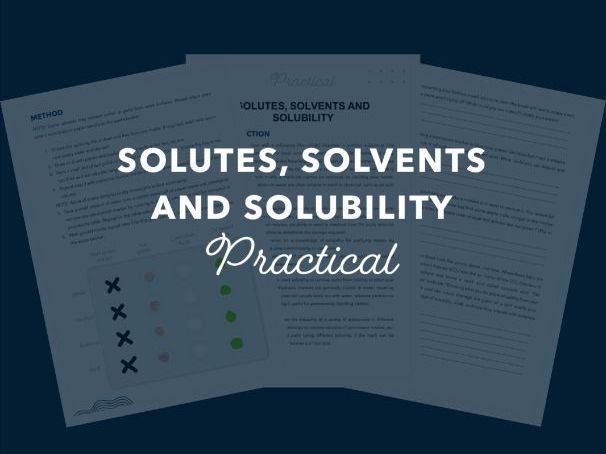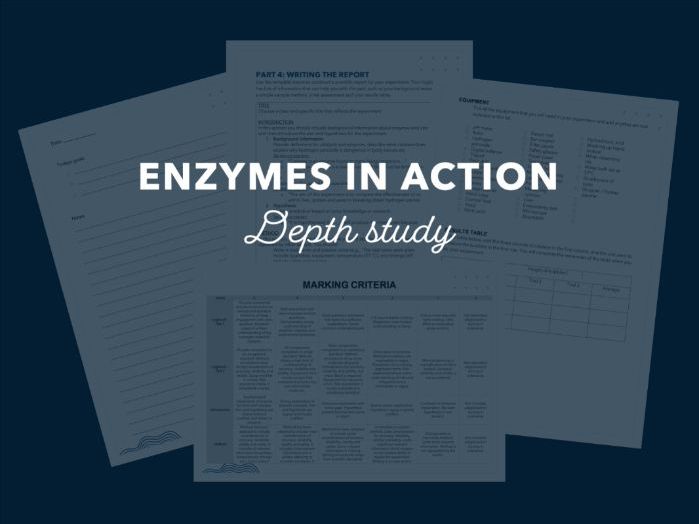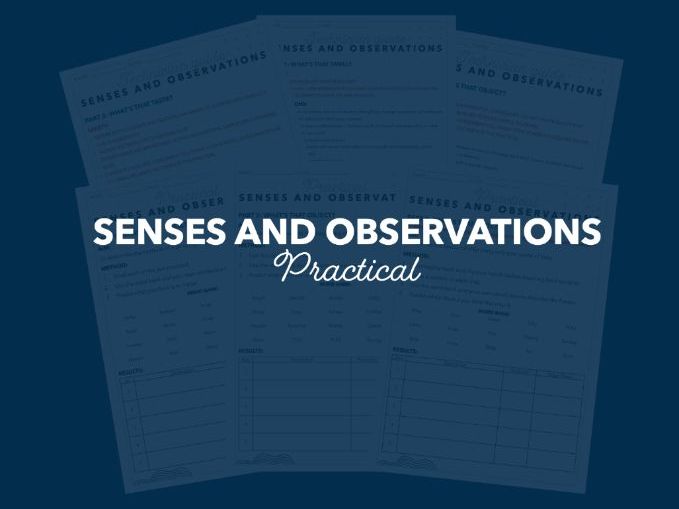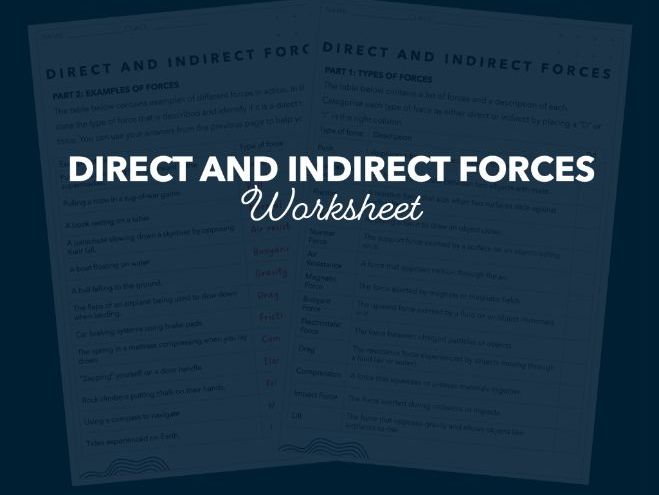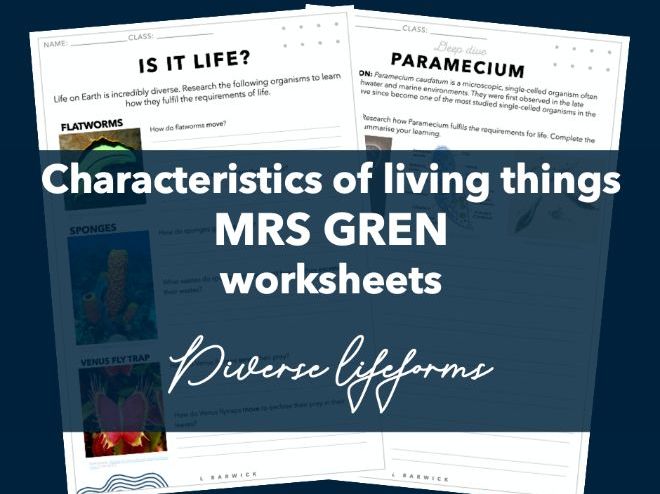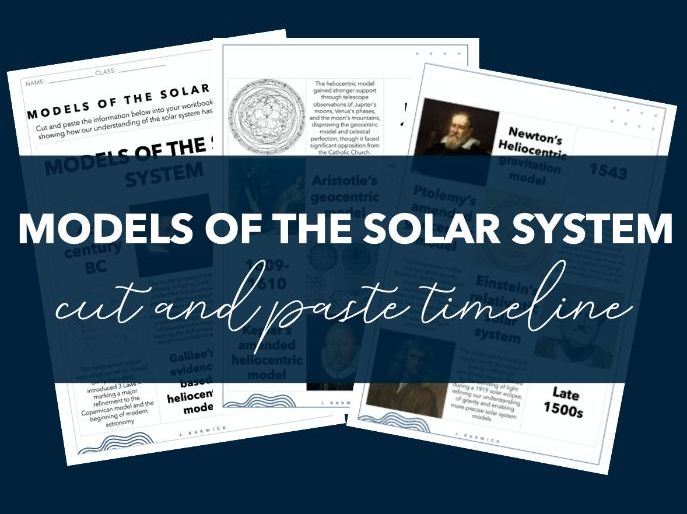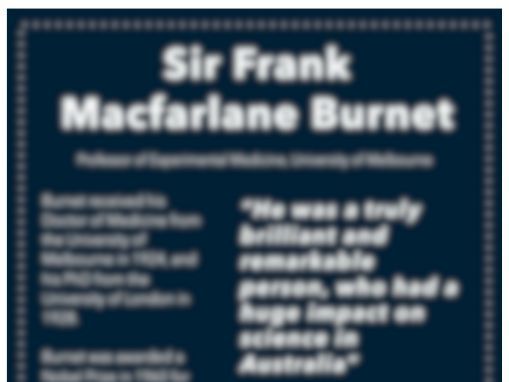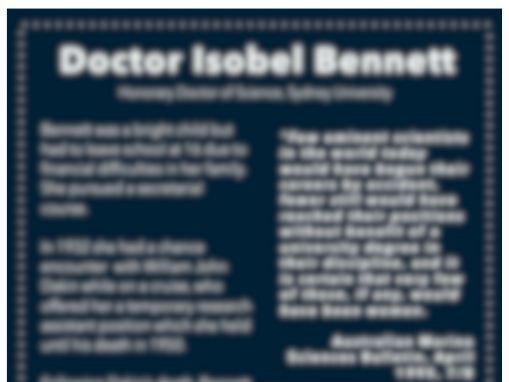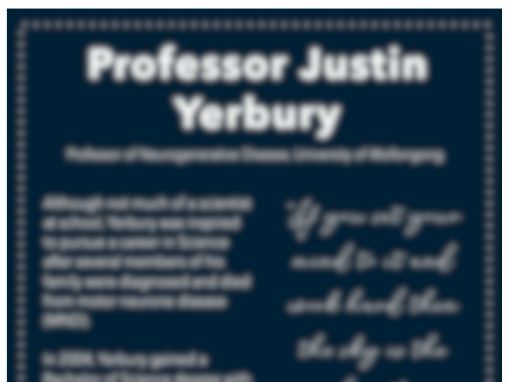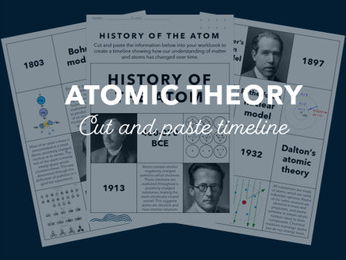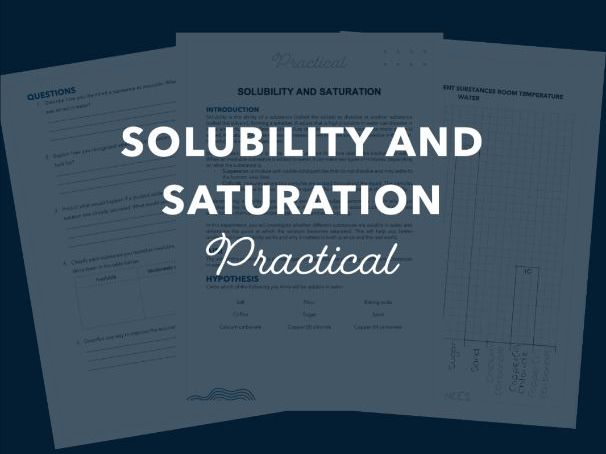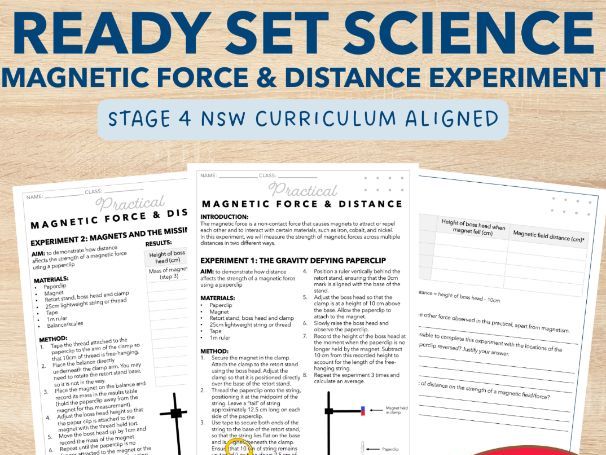14Uploads
67Views
0Downloads
All resources

Solutes, solvents and solubility | Practical
This hands-on investigation helps students develop a practical understanding of solutes, solvents, and the formation of solutions through direct experimentation.
In this activity, students test the solubility of everyday substances—such as permanent marker, nail polish, correction fluid, and oil-based paint—in a range of common solvents including water, alcohol, acetone, and vinegar. They record their observations and apply their findings to real-world contexts through a series of thought-provoking reflection questions.
Two versions included for flexible delivery:
Guided Version – Equipment list and method are provided, allowing students to focus on predictions, experimental results, and analysis.
Student-Led Version – Students write their own equipment list and method, supporting skill development in planning and procedural thinking.
This resource features:
A hypothesis table for pre-lab predictions
Results table to track solubility observations
Real-world application questions that link chemistry to everyday experiences
Clear formatting for ease of use in a lab setting
Designed specifically for use in practical lessons, this activity supports observation, analysis, and scientific thinking in a laboratory context.
NSW Syllabus Outcomes:
SC4-SOL-01: Explains how the properties of substances enable separation in a range of techniques.
SC4-WS-01: Uses scientific tools and instruments for observations.
SC4-WS-02: Identifies questions and makes predictions to guide scientific investigations.
SC4-WS-03: Plans safe and valid investigations.
SC4-WS-04: Follows a planned procedure to undertake safe and valid investigations.
SC4-WS-07: Identifies problem-solving strategies and proposes solutions.
SC4-WS-08: Communicates scientific concepts and ideas using a range of communication forms.

Senses and Observations | Practical (with Technician Guide)
This hands-on, three-part worksheet set will captivate your students’ attention and deepen their understanding of how we use our senses to interpret the world around us. Perfectly aligned to the New NSW Science Syllabus (2023) for Stage 4, these worksheets reinforce core scientific skills while promoting inquiry-based learning and observation.
What makes this resource a must-have for your classroom?
Multi-Sensory Investigation: Students will explore smell, touch, and taste through engaging practical tasks that challenge their observational abilities.
Comprehensive Worksheets: Structured activities guide students through making predictions, recording observations, and analyzing results.
Technician Support Guide: Clear instructions help lab technicians efficiently prepare the materials for a seamless classroom experience.
Curriculum-Aligned: Directly supports Outcome SC4-WS-01, encouraging students to use scientific tools and instruments for making observations.
NSW Syllabus Outcomes:
SC4-WS-01 uses scientific tools and instruments for observations
This engaging resource ensures your students develop essential observational skills in a fun and meaningful way.

Direct and indirect forces | Worksheet (with answers)
This double-sided worksheet is designed to enhance students’ understanding of forces, making it a valuable addition to any Stage 4 science classroom. Perfect as an introduction to the topic or as a revision tool, it helps students recognise and describe forces in everyday life while meeting syllabus outcomes.
Key Features:
Page 1: A detailed table of different types of forces, including brief descriptions. Students are tasked with identifying whether each force is direct or indirect.
Page 2: Real-life scenarios that encourage critical thinking. Students must determine the type of force described in each scenario and classify it as either direct or indirect.
Answer Key: Included to save time and assist teachers in providing immediate feedback.
This resource is fully aligned with the NEW 2023 NSW Science Syllabus and supports the outcome SC4-FOR-01: Describes the effects of forces in everyday contexts.
Why You’ll Love This Resource:
Encourages deep thinking and application of scientific concepts.
Simple, clear layout designed to make learning about forces accessible and engaging.
Useful for classroom activities, homework, or revision sessions.

Australian Biologist Classroom Poster - Doctor Elizabeth Blackburn
Celebrate groundbreaking science with Dr. Elizabeth Blackburn, Australia’s first female Nobel Laureate! This downloadable classroom poster highlights her image, career milestones and an empowering quote. Perfect for STEM classrooms—print, display, and inspire the next generation to explore the wonders of molecular biology and beyond!
NSW Syllabus Outcomes:
SC4-CLS-01 describes the unique features of cells in living things and how structural features can be used to classify organisms
SC5-GEV-02 explains how DNA is responsible for the transmission of heritable characteristics and can be manipulated through genetic technologies

Characteristics of Living Things - MRS GREN | Worksheet & Research Task
This two-part worksheet that will captivate your students’ attention and deepen their understanding of the characteristics of life! Perfectly aligned to the New NSW Science Syllabus (2023) for the Stage 4 Cells and Classification topic, these worksheets not only reinforce core concepts but also inspire independent research and critical thinking.
What makes this resource a must-have for your classroom?
Diverse, Real-World Lifeforms: Students will explore a variety of lifeforms they’ve likely never seen before, discovering how they perform the essential processes of life.
Deep Dive on Paramecium: Students will embark on an exciting research journey to investigate how this fascinating organism fulfils all the MRS GREN criteria, encouraging a deeper connection to the topic.
Perfect for Independent Learning: Students will apply their research skills as they investigate how different lifeforms meet these biological standards – a fun and challenging activity that promotes scientific inquiry.
NSW Syllabus Outcomes:
SC4-CLS-01 describes the unique features of cells in living things and how structural features can be used to classify organisms
SC4-WS-08 communicates scientific concepts and ideas using a range of communication forms

Models of the Solar System Cut & Paste Timeline
Engage your students in a hands-on exploration of the solar system’s historical models with this cut and paste timeline activity! Aligned with the NSW 2023 Science Syllabus, this activity helps students understand the evolution of solar system models by cutting out key information and creating their own timeline.
This activity includes names, descriptions, years, diagrams, and portraits for students to research, match, and place in the correct order.
Includes the models of:
Aristotle
Ptolemy
Copernicus
Tycho Brahe
Galileo
Kepler
Newton
Einstein
This resource requires minimal prep—just print single-sided. Students can work individually or in groups, making it perfect for research, revision, or collaborative learning. Answers/exemplar timeline provided. A great way to reinforce key concepts in the history of astronomy!
NSW Syllabus Outcomes:
SC4-WS-05: Uses a variety of ways to process and represent data
SC4-WS-07: Identifies problem-solving strategies and proposes solutions
SC4-WS-08: Communicates scientific concepts and ideas using a range of communication forms
SC4-OTU-01: Explains how observations are used by scientists to increase knowledge and understanding of the Universe
SC4-DA1-01: Explains how data is used by scientists to model and predict scientific phenomena

Australian Biologist Classroom Poster - Sir Frank Macfarlane Burnet
Celebrate the brilliance of Sir Macfarlane Burnet, a pioneering Australian scientist! This downloadable classroom poster features his image, career milestones, and highlights how his groundbreaking research with influenza viruses paved the way for modern vaccination development. Perfect for STEM classrooms—print, display, and inspire students to make their own mark on the world of science!
NSW Syllabus Outcomes:
SC4-CLS-01 describes the unique features of cells in living things and how structural features can be used to classify organisms
SC5-GEV-02 explains how DNA is responsible for the transmission of heritable characteristics and can be manipulated through genetic technologies
SC5-DIS-01 explains how an understanding of the causes of disease can be used to prevent and manage the spread of disease

Australian Biologist Classroom Poster - Doctor Isobel Bennett
Dive into marine biology with Dr. Isobel Bennett, a trailblazing Australian scientist! This downloadable classroom poster features her image, career milestones, and an inspiring extract from the Australian Marine Sciences Bulletin, highlighting her extraordinary journey from a secretarial course to one of Australia’s foremost marine biologists. Perfect for STEM classrooms—print, display, and encourage students to explore uncharted waters in science!
NSW Syllabus Outcomes:
SC4-CLS-01 describes the unique features of cells in living things and how structural features can be used to classify organisms
SC4-LIV-01 describes the role, structure and function of a range of living systems and their components
SC5-ENV-01 analyses the impact of human activity on the natural world
SC5-GEV-01 describes the relationship between the diversity of living things and the theory of evolution

Characteristics of Living Things - MRS GREN | Powerpoint
Ideal for Stage 4 Science students, this PowerPoint is designed to introduce the characteristics of life using the MRS GREN acronym in a way that is both accessible and memorable. Aligned with the NEW NSW Science Syllabus (Stage 4 Cells and Classification topic), it provides a clear, structured approach to understanding what makes something living.
What’s Inside:
Clear Learning Intentions & Success Criteria: Students will understand the key concepts they need to master, giving them a clear sense of purpose and direction throughout the lesson.
Brainstorming Activity: Kickstart the lesson with an engaging brainstorming session that gets students thinking critically about what it means for something to be alive, setting the stage for deeper exploration.
Introduction to MRS GREN: The PowerPoint introduces the powerful MRS GREN acronym, breaking down each characteristic of life (Movement, Respiration, Sensitivity, Growth, Reproduction, Excretion, Nutrition) in a fun, approachable way.
Summary Slide: A helpful summary at the end reinforces key takeaways, ensuring students leave with a solid grasp of the concept of life and the MRS GREN characteristics.
NSW Syllabus Outcomes:
SC4-CLS-01 describes the unique features of cells in living things and how structural features can be used to classify organisms

Australian Biologist Classroom Poster - Professor Justin Yerbury
Honour the legacy of Dr. Justin Yerbury, a dedicated MND researcher and scientist!This downloadable classroom poster features his image, career milestones, and an inspiring quote about his journey—from being inspired by personal tragedy to dedicating his life to understanding motor neurone disease. Perfect for STEM classrooms—print, display, and encourage students to turn challenges into meaningful scientific contributions!
NSW Syllabus Outcomes:
SC4-CLS-01 describes the unique features of cells in living things and how structural features can be used to classify organisms
SC5-GEV-02 explains how DNA is responsible for the transmission of heritable characteristics and can be manipulated through genetic technologies
SC5-DIS-01 explains how an understanding of the causes of disease can be used to prevent and manage the spread of disease

Timeline of Atomic Theory | Cut and Paste Activity
**Bring the evolution of atomic theory to life in your classroom with this hands-on, interactive timeline task. **
Aligned with the NSW 2023 Science Syllabus, this activity guides students through the key historical models of the atom as they cut, match, and organise essential information to build their own visual timeline.
This resource includes key scientists, their discoveries, years, atomic diagrams, and portraits for students to research, match, and sequence correctly.
Covers the major contributors to atomic theory:
Democritus
John Dalton
J.J. Thomson
Ernest Rutherford
Niels Bohr
Erwin Schrödinger
James Chadwick
Perfect for consolidating student understanding of how atomic theory has changed over time, this activity requires minimal preparation—simply print single-sided! Ideal for individual or group work, it’s great for research tasks, revision lessons, or collaborative classroom activities. Includes an answer key/exemplar timeline for easy marking or display.
A fun and effective way to reinforce the key milestones in the development of atomic theory!
NSW Syllabus Outcomes:
SC4-WS-05: Uses a variety of ways to process and represent data
SC4-WS-07: Identifies problem-solving strategies and proposes solutions
SC4-WS-08: Communicates scientific concepts and ideas using a range of communication forms
SC4-PRT-01: Explains how uses of elements and compounds are influenced by scientific understanding and discoveries relating to their properties
SC4-DA1-01: Explains how data is used by scientists to model and predict scientific phenomena

Solubility and Saturation | Practical
This engaging lab activity helps students explore solubility, saturation, and mixture types through direct experimentation with common and classroom-safe substances.
In this experiment, students test the solubility of various materials—such as salt, flour, sugar, and copper compounds—in water. They determine whether each substance is soluble, and if so, how much is required to reach saturation. The activity also introduces key scientific distinctions between solutions, suspensions, and colloids.
This structured version includes the aim, method, and equipment list, making it easy to implement in a lab setting while still encouraging independent observation and critical thinking.
This resource features:
A pre-lab hypothesis activity to engage students in making predictions
A results table to track solubility and saturation of nine different substances
A solubility graphing task for data interpretation and visual learning
Analysis questions that connect experimental outcomes to scientific concepts
Real-world extension questions to deepen conceptual knowledge
NSW Syllabus Outcomes:
SC4-SOL-01: Explains how the properties of substances enable separation in a range of techniques.
SC4-WS-01: Uses scientific tools and instruments for observations.
SC4-WS-02: Identifies questions and makes predictions to guide scientific investigations.
SC4-WS-03: Plans safe and valid investigations.
SC4-WS-04: Follows a planned procedure to undertake safe and valid investigations.
SC4-WS-07: Identifies problem-solving strategies and proposes solutions.
SC4-WS-08: Communicates scientific concepts and ideas using a range of communication forms.

Magnetic Force & Distance Experiment | Stage 4 NESA Syllabus | Practical
Engage your students in a hands on, two part practical experiment to investigate the effect of distance on the force of a magnet. This resource includes aims, materials, methods and results tables. Students are challenged to graph their results and answer post-practical questions to assess their understanding.
Experiment 1: Gravity-Defying Paperclip
In this experiment, students investigate how the strength of a magnetic force changes with distance. By raising a magnet incrementally and measuring when a suspended paperclip is no longer attracted to it, students collect data, make observations, and practice skills such as accurate measurement and scientific recording.
Experiment 2: Magnets and the Missing Mass
Students explore how increasing the distance between a magnet and a suspended paperclip affects the apparent mass of the magnet. This activity reinforces key physics concepts, including magnetic fields, forces, and Newton’s Second Law, while challenging students to graph and analyze their results.
Reflection and Critical Thinking Questions:
Both experiments include guiding questions to prompt deeper thinking. These questions encourage students to reflect on how forces act at a distance, the relationship between magnetism and Newton’s laws, and how different materials or conditions could change the outcome.
NSW Syllabus Outcomes:
SC4-FOR-01: Describes the effects of forces in everyday contexts

